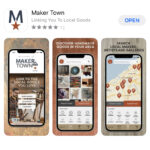I. Understanding Customization: Definition and Key Features
II. Exploring Personalization: Definition and Key Characteristics
III. Customization vs. Personalization: Key Differences and Examples
Understanding Customization: Definition and Key Features
Have you ever walked into a store and felt overwhelmed by all the choices? Or perhaps you’ve spent hours trying to make an online purchase, only to find that nothing seems to fit your needs perfectly? If so, you’ve likely encountered the concept of customization. So, what exactly does customization mean, and why is it becoming increasingly important in today’s consumer-driven world? Let’s dive into it!
What is Customization?
Customization is all about tailoring products or services to meet individual preferences or specifications. Instead of a one-size-fits-all approach, customization empowers consumers to create something that resonates with their unique tastes and needs. Think of it as having a personal tailor for your shopping experience!
Key Features of Customization
There are several key features that set customization apart and make it such an appealing choice for consumers:
- Personal Choice: Customization allows individuals to select from a variety of options. This may include colors, designs, sizes, and even functionalities. The power of choice is at the customer’s fingertips!
- Enhanced Satisfaction: When you customize a product, you’re more likely to end up with something that suits your needs perfectly. This tailored experience often leads to higher satisfaction levels, as you feel a sense of ownership over the final product.
- Creativity and Expression: Customization lets your personality shine through! Whether it’s designing a pair of shoes, selecting a flavor for your ice cream, or customizing a phone case, it’s an opportunity for self-expression.
- Increased Engagement: Brands that offer customization often experience better customer engagement. Consumers feel more involved in the process, which can lead to stronger brand loyalty and repeat purchases.
- Value Addition: Customization can also add perceived value to products. When you invest time into creating something unique, it often feels more valuable than a generic item off the shelf.
Why is Customization Important?
In a world where consumers are bombarded with choices, personalization is key. Customization can differentiate a brand in a saturated market, giving it an edge over competitors. Moreover, with the rise of technology and online platforms, businesses can easily incorporate customizable options into their offerings—making it easier for customers to find exactly what they want.
In summary, customization isn’t just a trend; it’s a way for brands to connect with their customers on a deeper level. By allowing them to craft their own unique experiences, businesses can foster loyalty and satisfaction that keeps customers coming back for more. So the next time you find yourself craving something a bit more personal, remember that customization could be the answer to your shopping woes!
Exploring Personalization: Definition and Key Characteristics
Hey there! Let’s dive into the fascinating world of personalization. You’ve probably come across this term countless times in your daily life, especially in the digital age where everything feels tailored just for you. But what does personalization really mean, and what are its key characteristics? Let’s unravel this together!
What is Personalization?
In a nutshell, personalization is the process of tailoring experiences, content, or products to an individual’s preferences and behaviors. Unlike customization, where you create your own experience, personalization is more about how a service or product adapts to you based on data and interactions. Think of it as a friendly assistant who knows your tastes and habits, serving up exactly what you love!
Key Characteristics of Personalization
- Data-Driven: Personalization relies heavily on data. Companies collect information about your preferences, search history, and even the time you spend on different pages. This data helps them understand what you might enjoy, making your experience more relevant and engaging.
- Dynamic Adaptation: One of the coolest aspects of personalization is its ability to change in real-time. As you interact more with a platform, it learns and evolves to better suit your needs. For example, streaming services like Netflix adjust their recommendations based on what you’ve watched before.
- User-Centric: Personalization puts you, the user, at the heart of the experience. It’s all about making sure you feel valued and understood. When you receive product recommendations that match your interests, it’s like having a friend who just “gets” you.
- Enhanced Engagement: When experiences feel personalized, you’re more likely to engage with them. Whether it’s a customized email that speaks to your needs or a shopping experience that shows you items you’ll likely love, personalization boosts user satisfaction and loyalty.
Examples of Personalization in Action
Let’s take a look at some everyday examples that highlight how personalization works:
- E-commerce Platforms: Ever notice how when you shop online, sites like Amazon show you products based on your previous purchases or items in your cart? That’s personalization at its finest, helping you discover what you might need next.
- Social Media Feeds: When you scroll through your favorite social media app, the content you see is curated based on your interactions. Posts from accounts you engage with frequently appear more often, making your feed feel like it was designed just for you.
- Email Marketing: Personalized emails are tailored to your interests, showcasing products and offers that align with your browsing history. Instead of generic promotions, you receive information that genuinely interests you—like a special discount on something you’ve been eyeing!
In summary, personalization is all about making your experience more relevant, engaging, and enjoyable. By leveraging data and adapting dynamically, businesses can create a tailored approach that feels personal and meaningful. So next time you experience a tailored suggestion, you can appreciate the thoughtful personalization behind it!
Customization vs. Personalization: Key Differences and Examples
Hey there! Let’s dive into the intriguing world of customization and personalization. While these terms often get tossed around interchangeably, they actually carry distinct meanings and serve different purposes. Understanding these differences can help you make better choices—whether you’re shopping for a new gadget, designing your website, or even curating your social media feed. So, let’s break it down!
What’s Customization?
Customization is all about giving you the power to modify something according to your preferences. Think of it as a do-it-yourself approach where you get to choose features or specifications. Here are some quick points to consider:
- User Control: You dictate the changes.
- Specific Choices: Options are often predetermined. For example, when building a computer, you might choose the processor, RAM, or storage type.
- Hands-On Experience: Customization often requires more involvement from you.
For example, imagine you’re ordering a pizza. You get to choose the crust, sauce, toppings, and even the cheese. You’re essentially designing your meal based on your unique taste—now that’s customization!
What’s Personalization?
Now, let’s talk about personalization. This process involves tailoring experiences or recommendations based on your past behavior, preferences, or data. Think of it as a more passive approach where technology does the heavy lifting for you. Key characteristics include:
- Data-Driven: Relies on algorithms and user history.
- Seamless Experience: You don’t have to make specific choices—recommendations are made for you.
- Adaptive: It evolves as your preferences change.
Consider a streaming service, like Netflix. When you log in, you see suggested shows and movies tailored to your viewing habits. This is personalization at its finest—no effort on your part, yet highly relevant to your tastes.
Key Differences
So, what are the main differences between customization and personalization? Let’s sum it up:
- Control: Customization puts you in the driver’s seat, while personalization lets the system do the driving.
- Effort Level: Customization often requires more effort and decision-making from you, whereas personalization is generally automated and requires little to no input.
- Outcome: With customization, the final product is a direct reflection of your choices. In personalization, the recommendations or experiences are based on inferred preferences.
Examples in Action
Let’s look at another example to clarify. Imagine shopping for clothes:
- If you’re customizing, you might design your own t-shirt, selecting the color, style, and graphic placement.
- If the site personalizes your experience, it might show you outfits based on your previous purchases or items you’ve browsed.
In conclusion, both customization and personalization have their unique advantages, and understanding their differences can help you navigate the vast landscape of products and services out there. Whether you prefer a hands-on approach or enjoy tailored recommendations, there’s something for everyone! Happy exploring!










Comments